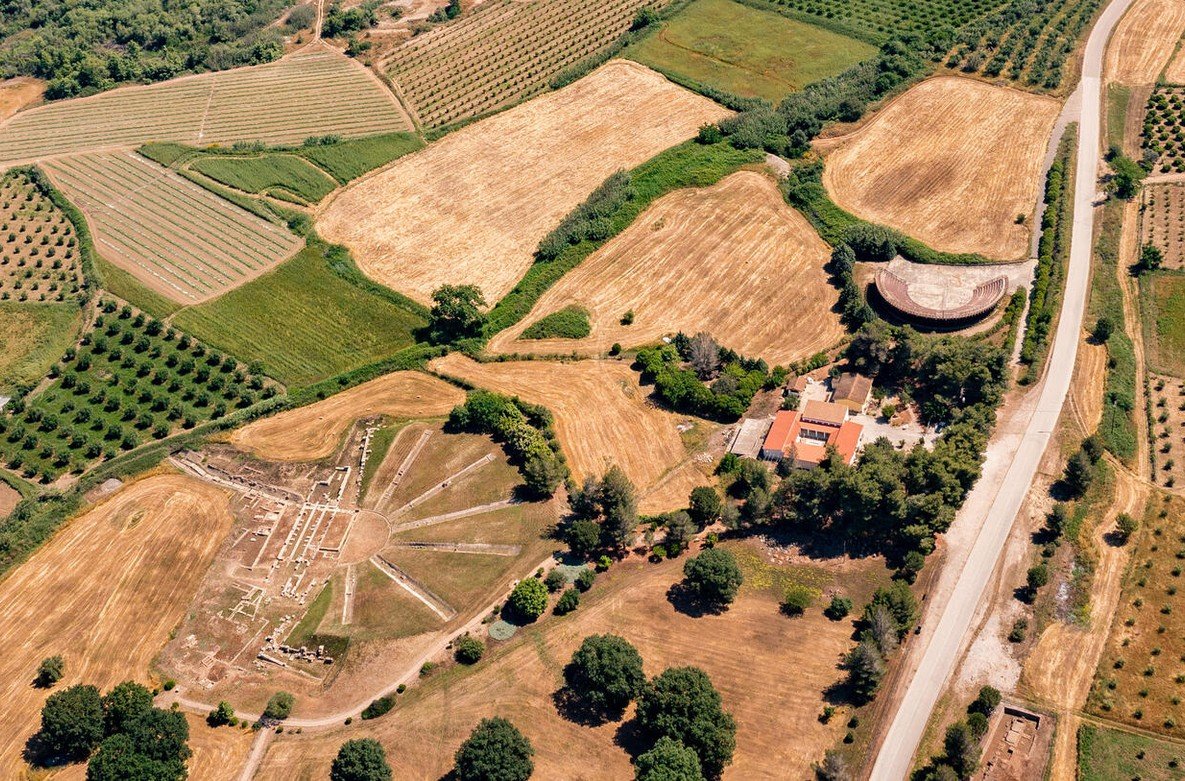- Ancient Acropolis. The place is also known as Palaiopyrgos or Kaloskopi (belvedere) or Ayannis (from the homonymous temple).
- Archaeological Museum.
- Kiln for firing ceramic objects. It is a typical example of the laboratory facilities and occupations of the inhabitants of Elis (3rd-4th century AD).
- Old Archaeological Collection.
- Ancient Theatre. It dates back to the end of the 4th century BC (about 300 BC). It has a stone stage, a circular orchestra and an earthen hollow without friezes and stone benches. It underwent alterations in Roman times.
- Agora. It includes relics of the double Kerkiraiki stoa and the stoa of the Hellanodikai, which are mentioned by Pausanias. Also, a complex of buildings mainly of cultic character. Founded on a prehistoric horizon It was used successively from the 5th century BC until the Roman times. In the late Roman times phase are the four ceramic kilns.
- Shrines. According to Pausanias they were founded SE. of the Agora.
- Muses edifice. Large villa of the late Roman period in the southwest of the Agora of Elis. Here the mosaic floor with depiction of the Nine Muses and the Twelve Labours of Hercules, was discovered, now exhibited in the Archaeological Museum of Elis.
- City’s core. SW of the Agora. The city was built according to the Hippodamian urban system, part of which has been excavated with remains of shops, workshops and baths, dominated by ruins, possibly belonging to the temple of the Roman emperors (1st century AD).
- Octagon. Imposing and carefully constructed building with mosaics floors and marble masonry (3rd century AD).
- Wooden theatre. It was built in the year 2005. It hosts the performances of the Ancient Elis Festival.


…elis, the cradle of the olympic games…